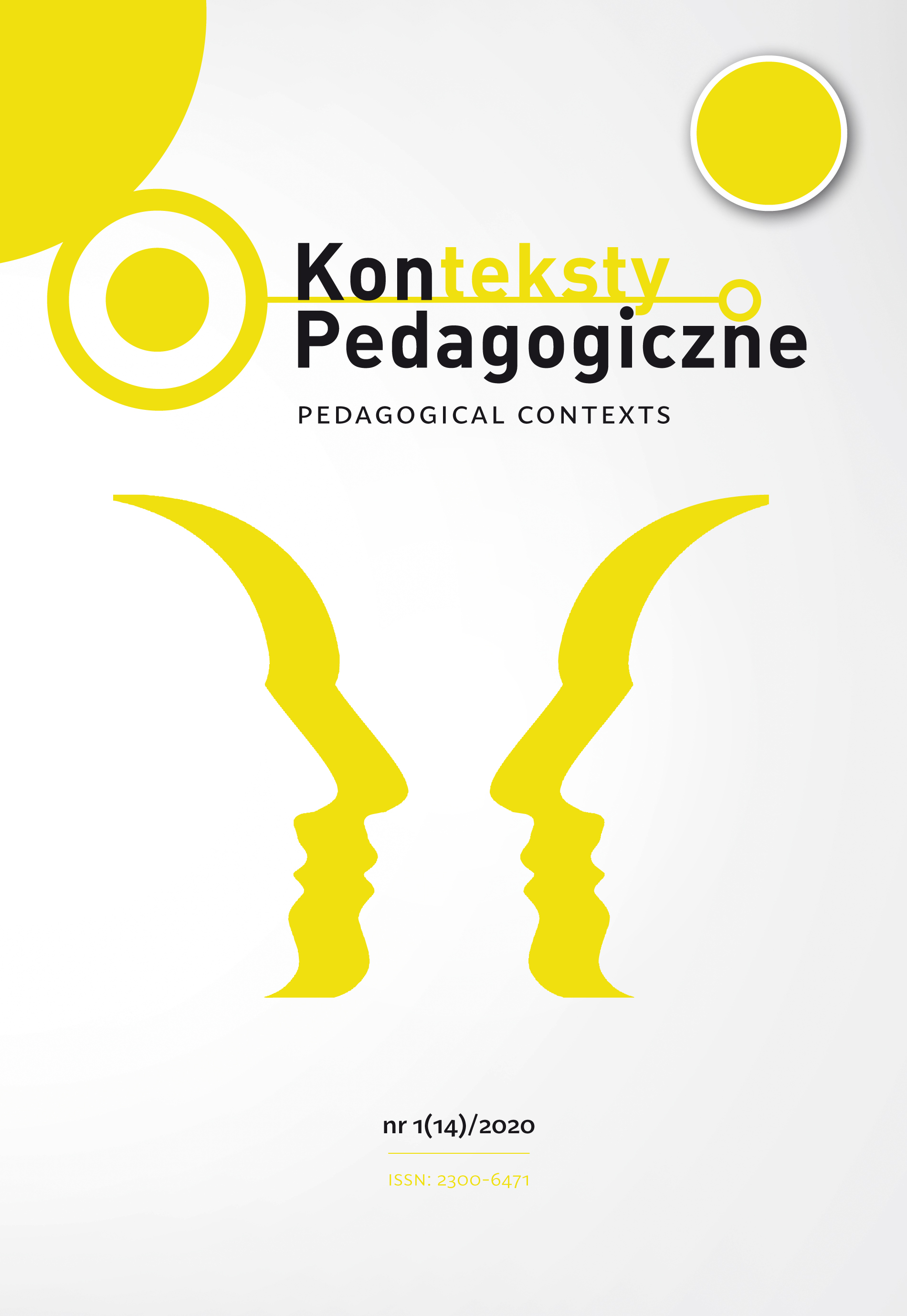Abstract
Carbon monoxide poisoning leads to the destruction of nerve cells and results in late neurological symptoms. The article presents the clinical symptoms of carbon monoxide poisoning and related consciousness disorders. A case study is analyzed which shows the characteristics of a person who, after carbon monoxide poisoning, was initially in a coma, then in a state of minimal consciousness, and is now in full consciousness. Rehabilitation and therapeutic activities are described, with particular emphasis placed on communication activities. The therapies undertaken have contributed to the better functioning of the examined person.
References
Białkowska, J., Sowa, M. & Maksymowicz, W. (2011). Wybudzenia ze śpiączki chorych z ciężkimi zaburzeniami neurologicznymi. Prezentacja przypadków [Awakening from Coma in Patients with Severe Neurological Disorders. Case Studies]. Szkice Humanistyczne, 12(4), 79–89.
Frydrych, B. (2017). Wybrane związki nieorganiczne [Selected Inorganic Compounds]. In: J.K. Piotrowski (ed.), Podstawy toksykologii. Kompendium dla studentów szkół wyższych [Basics of Toxicology. Compendium for College Students]. Warszawa: Wydawnictwo WNT.
Giacino, J.T. et al. (2014). Disorders of Consciousness after Acquired Brain Injury: the State of Research. Nat Rev Neurol., 10(2), 99–114.
Gosseries, O. et al. (2011). Disorders of Consciousness: Coma, Vegetative and Minimally Conscious States. In: D. Cvetkovic & I. Cosic (eds.), States of Consciousness (pp. 29–55). Berlin–Heidelberg: Springer.
Górska, U., Koculak, M., Brocka, M. & Binder, M. (2014). Zaburzenia świadomości – perspektywa kliniczna i etyczna [Awareness Disorders – Clinical and Ethical Perspective]. Aktual Neurol., 14(3), 190–198.
Herzyk, A. (2017). Neuropsychologia kliniczna wobec zjawisk świadomości i nieświadomości [Clinical Neuropsychology in the Face of Consciousness and Unconsciousness]. Warszawa: PWN, http://www.klinikabudzik.pl/pl/klinika/ponadstandardowe-zabiegi-rehabilitacyjne [accessed: 25.04.2020].
Program C-EYE [C-EYE Program], https://elderis.pl/oferta/c-eye/ [accessed: 24.04.2020].
Kochanowicz, A.M. (2019). Eye tracking w diagnozie, terapii i edukacji dzieci z niepełnosprawnością sprzężoną – zarys problematyki [Eye Tracking in the Diagnosis, Therapy and Education of Children with Linked Disabilities – an Outline of the Problem]. Edukacja Elementarna w Teorii i Praktyce [Elementary Education in Theory and Practice], 14(4), 109–119.
Kurkowski, Z.M. (2001). Stymulacja audio-psycho-lingwistyczna. Metoda Tomatisa [Audio-Psycho-Linguistic Stimulation. The Tomatis Method]. Audiofonologia, 19, 197–202.
Kwiatkowska, A. & Czyżewski, A. (2017). Komputerowe oko świadomości [Computer Eye of Consciousness]. Warszawa: Akademicka Oficyna Wydawnicza Exit.
Nieścior, M. & Jackowska, T. (2013). Zatrucie tlenkiem węgla [Carbon Monoxide Poisoning]. Postępy Nauk Medycznych, 26(7), 519–523.
Pąchalska, M. (2012). Neuropsychologia kliniczna. Urazy mózgu. Procesy komunikacyjne i powrót do społeczeństwa 2 [Clinical Neuropsychology. Brain Injuries. Communication Processes and Return to Society 2]. Warszawa: PWN.
Pinkosz, K. (2017). Wybudzenia. Powrót do życia. Polskie historie [The Awakenings. Return to Life. Polish stories]. Warszawa: Eureka.
Ratyńska, J. (2013). Wprowadzenie do metody [Introduction to the Method]. In: Metoda Tomatisa. Publikacja końcowa projektu „Uwaga! Sposób na sukces” [The Tomatis method. Final publication of the Project “Attention! A way to success”] (pp. 17–28). Gdańsk.
Vigand, P. & Vigand, S. (1999). Cholerna cisza [Only the Eyes Say Yes: A Love Story], transl. J. Łukaszewicz. Wrocław: Wydawnictwo Dolnośląskie.
In accordance with the recommendation of the Ministry of Science and Higher Education, which aims to counteract the practice of “ghostwriting” and “guest authorship,” all authors submitting their text for publication should attach an author’s statement which declares the contribution of each of the authors to the article. The printed and signed statement should be delivered by mail or other means to editor-in-chief Joanna Skibska or sent in the form of a scan to the following e-mail address: redakcja@kontekstypedagogczne.pl. The authors will not receive remuneration for publishing their papers. The editors reserve the right to make minor editorial changes to the articles which will not affect the substance of the article. We encourage all authors to prepare their articles in accordance with the guidelines for manuscript preparation. Download pdf file.
Authors transfer all copyrights and grant the journal the right of first publication with the work simultaneously licensed under a Creative Commons Attribution License that allows others to share the work with acknowledgement of the work's authorship and initial publication in this journal. All authors agree to the publishing of their email addresses, affiliations and short bio statements with their articles during the submission process.

